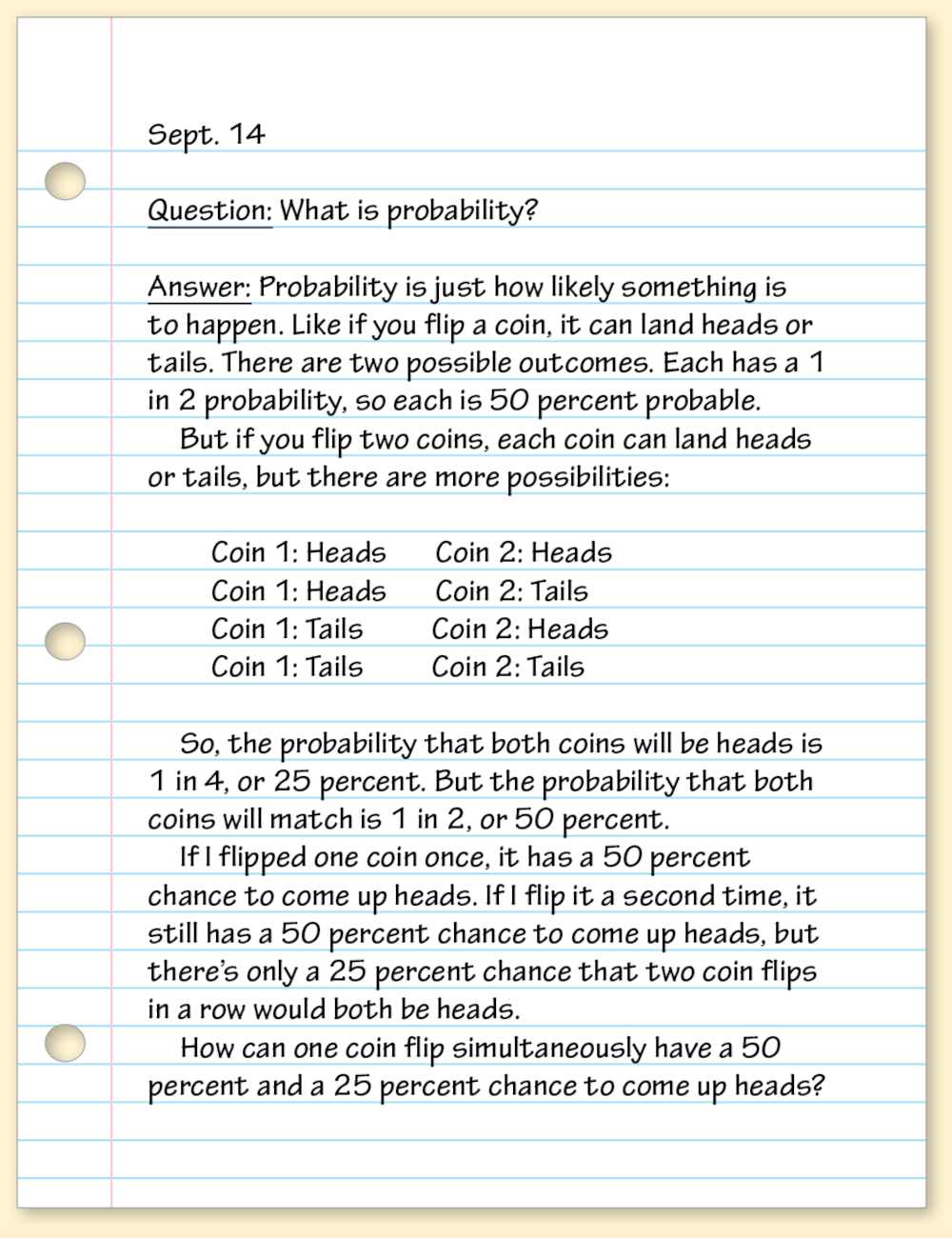WOC 135
Page 135

Using Learning Logs
Your science teacher says, “Almost everything on earth eats sunlight.” What could she mean? Yes, all the plants use sunlight, C02, H2O, and nitrogen to create energy and grow. And, yes, many animals eat plants, and other animals eat them, so all are in the end eating sunlight. But what living things don’t eat sunlight? Maybe those 6-foot tube worms that live at the bottom of the ocean beside volcanic vents?
These are perfect questions to wonder about in a learning log. A learning log is a journal that lets you reflect on what you are discovering in a class such as science, math, or history. Learning logs help you wrestle with new concepts, deepen understanding, and study for tests. In this chapter, you’ll discover how to create your own learning log.
What’s Ahead
WOC 136
Page 136
Keeping a Learning Log
A learning log is a place to write down your thoughts, feelings, and questions about subjects you are studying. In this way, learning-log notes are different from lecture and reading notes. Here are some tips:
Keep a learning log for any subject, but especially for one that is hard for you. This will help you learn the subject better.
Use graphic organizers and drawings. (See page 35.)
Write freely. Don’t worry about getting every word correct.
Write about any of the following ideas:
■ the most important thing you learned from a reading assignment or lecture
■ questions you have plus your plan for finding answers
■ your thoughts about a group project
■ what you learned from an experiment
■ a list of key words that come to mind after a lesson
■ your feelings about something you learned
■ your feelings about how you are doing in the subject
Writing-to-Learn Activities
Here are more ideas for writing in a learning log.
- First Thoughts: List your first impressions about something you are studying or reading.
- Nutshelling: Try summing up in one sentence the main idea of what you are learning.
- Stop ’n’ Write: Stop working with whatever you have in front of you and start writing about it. This technique will refresh your focus when you go back to the material.
- Questions: Write a series of questions you have about a topic. Then find answers, whether in your book, through web search, or by asking your teacher.
- Draw It: Create a diagram, graph, drawing, or table. When you represent ideas graphically, you make them easier to understand and remember.
- Synergizing: With a classmate, take turns writing statements (or questions and answers) about something you are studying. This technique is especially effective when reviewing.
WOC 137
Page 137
Science Log
Learning logs work in any class and for any subject. Learning logs work best if you think and write freely, personalizing the information. The entry below is a reaction to a lesson about the parts of a cell.

WOC 138
Page 138
Math Log
Students in Mr. Dixon’s class keep learning logs to help them think through math concepts. Each day they write down a question about a concept discussed in class and answer it later in their learning logs. Below is one of Andrea Davis’s entries.
